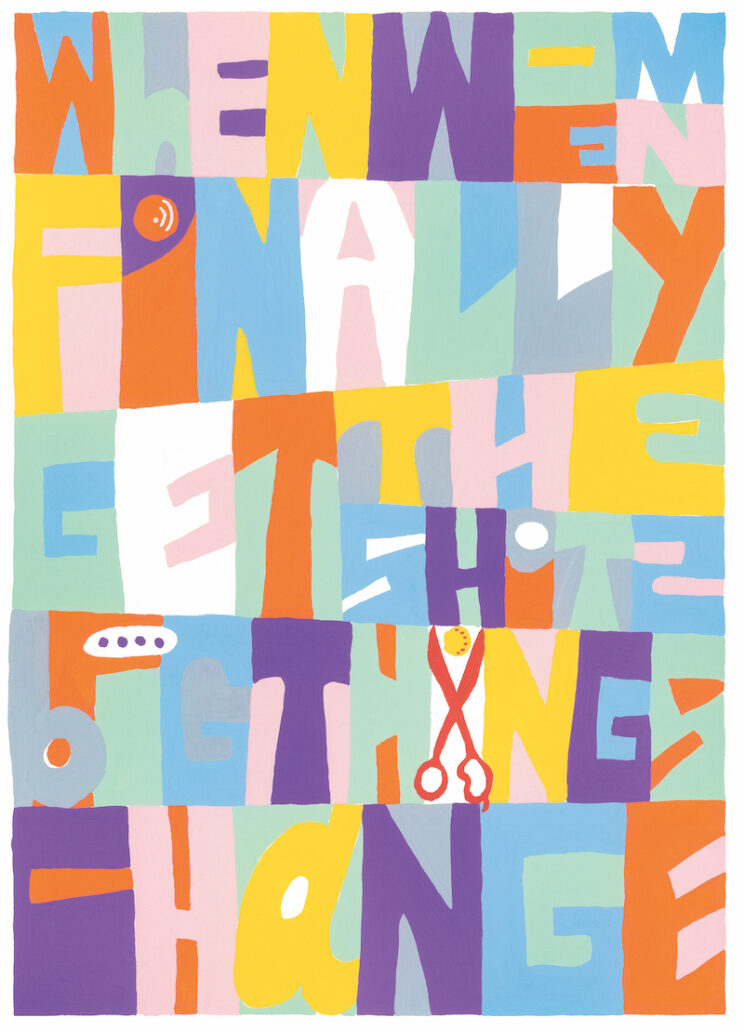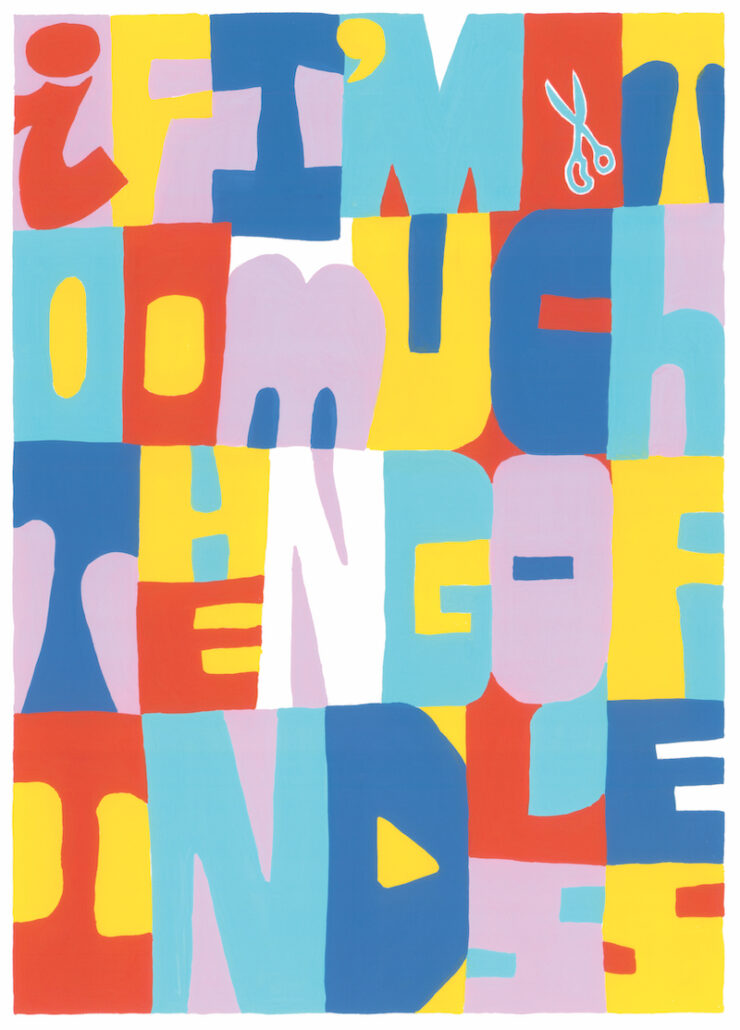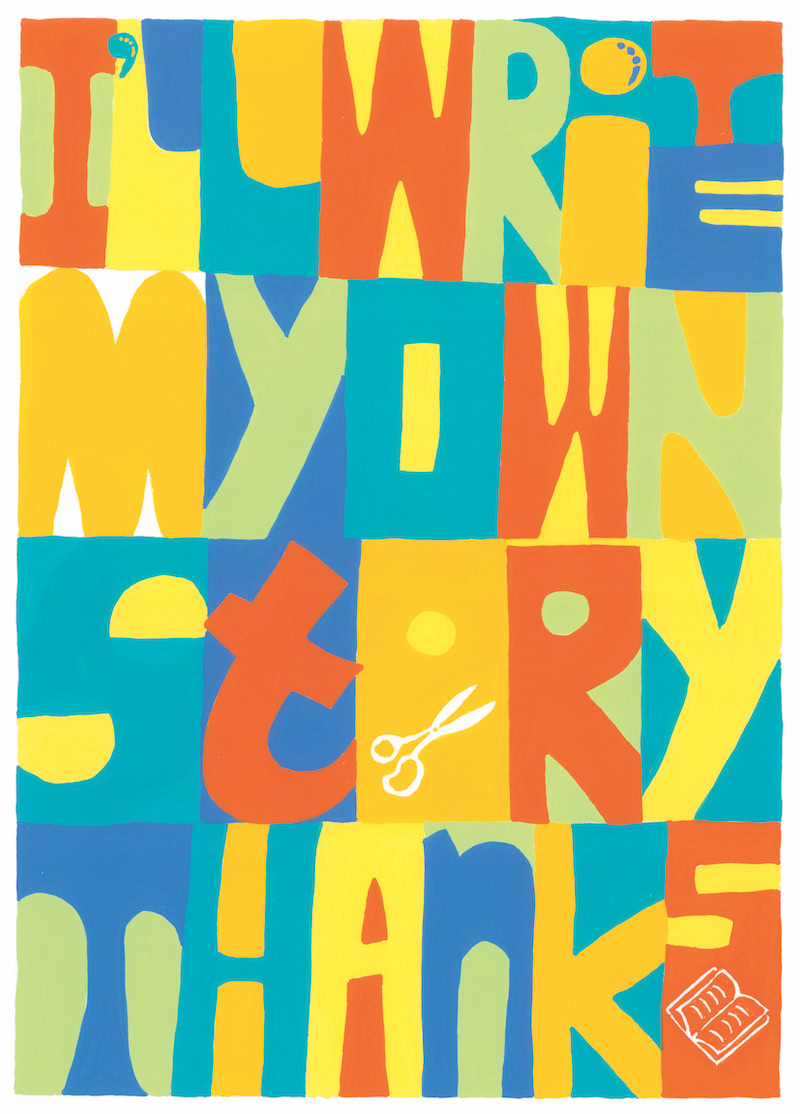Artist and art therapist Tina Pitsiavas has been adding to her series Patchworks of Protest since 2019, with her work acting as a means to process the endless stream of words and information she – like the rest of us – is subject to daily. Through advertisements and news articles, AI-generated announcements and social media updates, we are constantly presented with the goings on of the world, sometimes in forms that are deceptive or misleading.
In keeping with this sense of separation between words and true meaning, the artist has chosen to camouflage the often serious tone of her messages behind dramatic fonts and bold colour schemes informed by the typographical style of the 60s and 70s. Letters perch atop one another, collaged together in a way that seems almost abstract on first glance.
The bright colours, achieved with Japanese gouache due to its rich pigmentation, hide phrases that are forceful and often wryly humorous. However, much like the real world, it is up to the viewer to decide the underlying meaning behind the artist’s words: “I know what each work means to me, and what inspired me to create each piece. But I prefer viewers to make up their own mind, based on their own life experiences”.
Above: Tina Pitsiavas, I’ll Write My Own Story Thanks, 2024. Gouache on watercolour paper, 38 x 28cm. Courtesy: the artist.

Tina Pitsiavas, When Women Finally Get the Shits Big Things Change, 2024. Gouache on watercolour paper, 38 x 28cm.

Tina Pitsiavas, If I’m Too Much, Then Go Find Less, 2024. Gouache on watercolour paper, 38 x 28cm.

